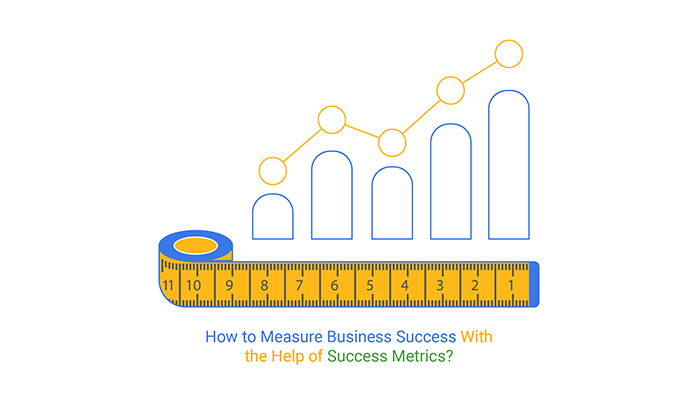Measuring business success has always been more nuanced than a glance at the bottom line. While profitability is a core indicator, it doesn’t paint the full picture of a company’s overall health, potential, or impact. In today’s competitive and fast-evolving landscape, defining success requires a broader, more balanced approach—one that takes into account financial stability, customer satisfaction, employee engagement, innovation, and long-term growth.
One of the most straightforward ways to assess success is by looking at revenue growth. A steady increase in sales over time often signals that a business is gaining traction and meeting market demand. However, it’s important to examine growth in context. For instance, a company might see rising sales but declining margins due to unsustainable discounting strategies or operational inefficiencies. In such cases, the topline numbers alone may mislead more than they inform. That’s why many leaders also pay close attention to profitability metrics such as net income, gross margin, and EBITDA. These figures provide a clearer view of how effectively a business converts revenue into actual value.
Yet, financial data isn’t the only lens through which to view success. Customer satisfaction plays an equally critical role. After all, a business can’t grow without loyal customers. Metrics like Net Promoter Score (NPS), customer retention rate, and average order value reveal not just how many people are buying—but how many are coming back, and how valuable they are over time. Companies that prioritize customer experience often benefit from word-of-mouth marketing, which can be far more impactful and cost-effective than any paid advertising campaign. A business that consistently delights its customers is one that’s likely to thrive even in challenging market conditions.
Employee engagement is another powerful signal of business success, though it’s often overlooked. A motivated, aligned workforce can be a major competitive advantage. Employees who believe in the mission of a company, feel heard by leadership, and see a future for themselves within the organization are more likely to contribute meaningfully to its success. Measuring internal sentiment through regular feedback surveys or performance reviews can uncover valuable insights. High turnover rates or low morale, on the other hand, can be early warning signs that something in the culture or management structure isn’t working.
Innovation is also a key driver of long-term viability. Businesses that invest in research, technology, and product development tend to stay ahead of the curve, especially in industries where consumer preferences and technologies shift rapidly. But innovation isn’t limited to new product launches. It can be as simple as improving a supply chain, streamlining customer service processes, or finding more efficient ways to deliver value. The ability to adapt and evolve is often what separates companies that plateau from those that scale.
Market share provides another important indicator, particularly in competitive sectors. Capturing a larger share of your target market often suggests that your value proposition is resonating. However, market share should be analyzed alongside profitability. A company might dominate in volume but struggle with razor-thin margins that limit its ability to reinvest in growth. Success, therefore, lies in finding the right balance between expanding reach and maintaining financial discipline.
Reputation and brand equity also carry significant weight in the success equation. A strong brand can command higher prices, foster loyalty, and withstand economic downturns better than a lesser-known competitor. Monitoring online reviews, media mentions, and social media sentiment can help gauge how a brand is perceived. In today’s hyper-connected world, public perception can shift quickly, and businesses that actively manage their reputations are often better positioned to handle crises and seize opportunities.
Cash flow is another vital indicator that often gets less attention than it deserves. Even profitable companies can run into trouble if their cash flow is poorly managed. Being able to meet obligations, pay suppliers on time, and invest in future growth without constantly scrambling for liquidity is a fundamental marker of a stable and sustainable operation. This is especially true for small and medium-sized enterprises, where tight margins and limited access to capital can make or break the business.
Ultimately, how a company defines and measures success depends on its specific goals. A nonprofit might prioritize impact over income. A startup might measure progress through user acquisition or product development milestones rather than immediate profits. A family-owned business might value legacy, community involvement, or employee wellbeing as much as market dominance. What matters is that the metrics used are aligned with the organization’s mission and values.
Setting clear, measurable goals and tracking progress consistently helps create accountability and focus. But it’s just as important to remain flexible. The business landscape is fluid, and what constitutes success today may look different in five years. Companies that build in regular reviews and make data-informed decisions are more likely to stay agile and responsive to change.
In the end, measuring business success is as much about asking the right questions as it is about interpreting the numbers. Are we creating lasting value for our customers? Are we building something sustainable and meaningful for our employees and stakeholders? Are we in a better position today than we were a year ago? When those answers are affirmative, success becomes more than just a number on a spreadsheet—it becomes a reflection of purpose, impact, and growth.




